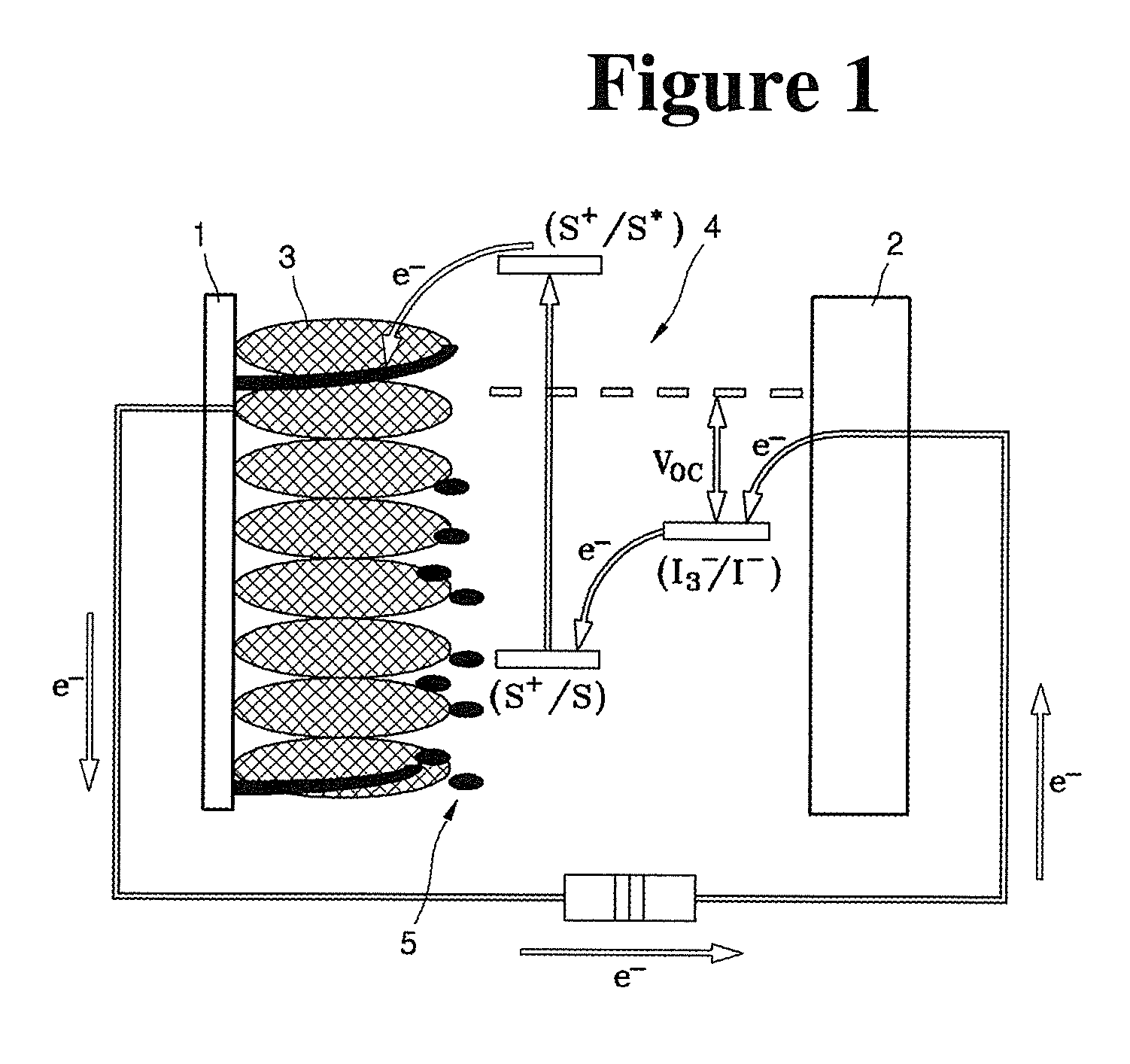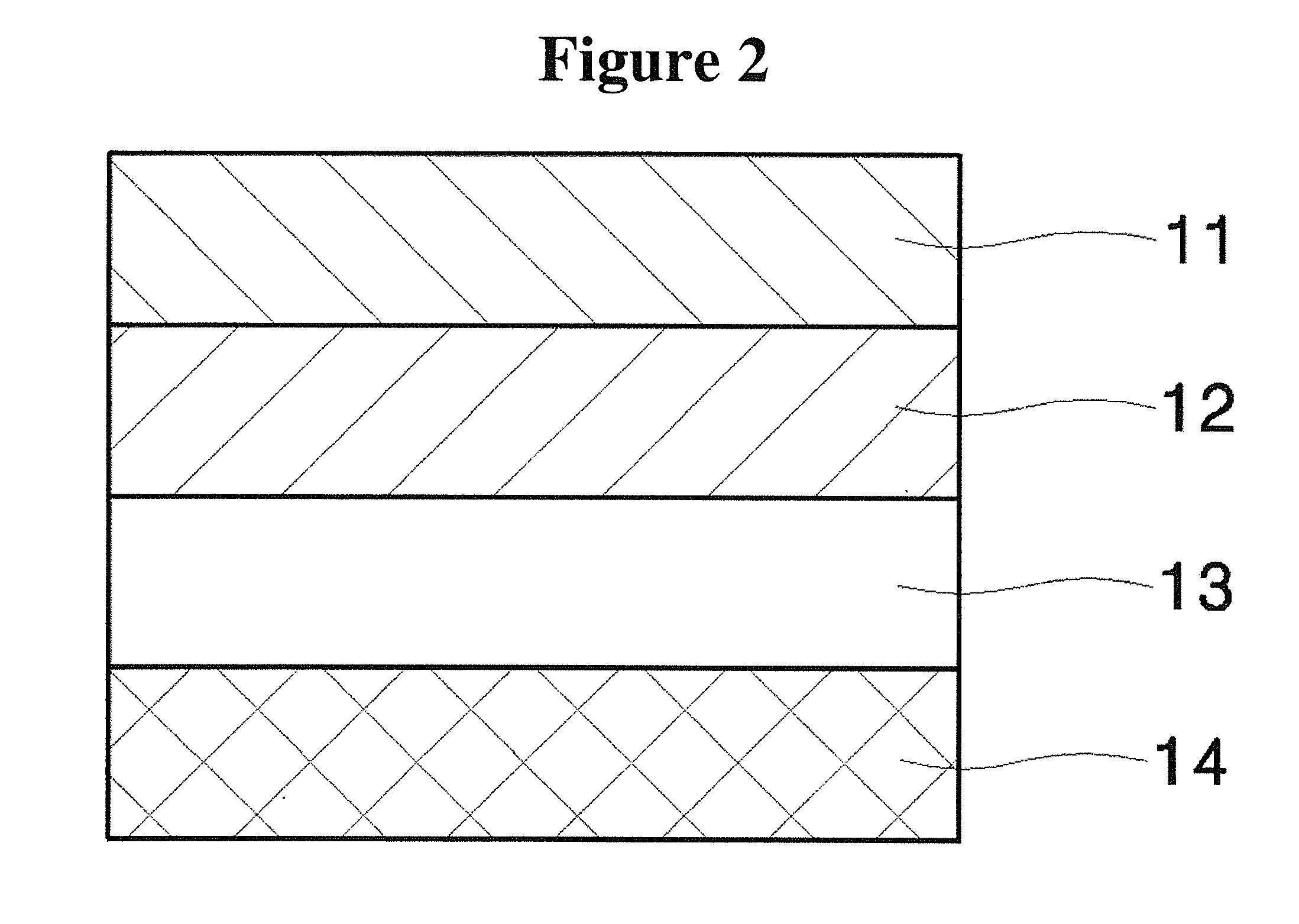Dye for dye-sensitized solar cells, method of preparing the same, and solar cell including the dye
a solar cell and dye technology, applied in the direction of ruthenium organic compound, sustainable manufacturing/processing, final product manufacturing, etc., can solve the problems of high cost of silicon solar cells, difficult to make them commercially viable, and difficult to achieve battery efficiency
- Summary
- Abstract
- Description
- Claims
- Application Information
AI Technical Summary
Benefits of technology
Problems solved by technology
Method used
Image
Examples
example 1
Purification of Ru(dcbpvH)2(NCS)2(TBA)2
[0077]As used herein, dcbpyH represents 2,2′-bipyridyl-4,4′-dicarboxylic acid, and TBA represents tetrabutylammonium.
[0078]0.50 g of Ru(dcbpyH)2(NCS)2(TBA)2, 0.58 g of tetrabutylammonium thiocyanate, and 0.27 g of tetrabutylammonium hydroxide were completely dissolved with 100 ml of triple distilled water. The mixed solution was loaded into a column filled with Sepadex LH-20 while being poured together with distilled water. Only a dark band formed at the middle of the column was isolated, and a pH of the isolated solution was adjusted to be 3.8 using an aqueous nitric acid solution. The solution with a pH of 3.8 was frozen at a temperature of −7° C. for one day, and then the frozen product was melted and filtered through filter paper. The filtered product was vacuum-dried, thereby preparing a dye.
[0079]A mole ratio of dcbpyH to TBA and the amount of the organometallic complex represented by Formula 6 were evaluated using 1H-NMR.
[0080]Manufactu...
example 2
Purification of Ru(dcbpvH)2NCS TBA)2
[0085]0.50 g of Ru(dcbpyH)2(NCS)2(TBA)2, 0.58 g of tetrabutylammonium thiocyanate, and 0.27 g of tetrabutylammonium hydroxide were completely dissolved with 100 ml of triple distilled water. The mixed solution was loaded into a column filled with Sepadex LH-20 while being poured together with distilled water. Only a dark band formed at the middle of the column was isolated, and a pH of the isolated solution was adjusted to 4.0 using an aqueous nitric acid solution. The solution with the pH of 4.0 was frozen at a temperature of −7° C. for one day, and then the frozen product was melted and filtered through filter paper. The filtered product was vacuum-dried, thereby preparing a dye.
[0086]A mole ratio of dcbpyH to TBA and the amount of the organometallic complex represented by Formula 6 were evaluated using 1H-NMR.
[0087]Manufacture of Dye-Sensitized Solar Cell
[0088]A dye-sensitized solar cell was manufactured as in Example 1, except that the dye ob...
PUM
| Property | Measurement | Unit |
|---|---|---|
| wt % | aaaaa | aaaaa |
| metallic | aaaaa | aaaaa |
| weight | aaaaa | aaaaa |
Abstract
Description
Claims
Application Information
 Login to View More
Login to View More - R&D
- Intellectual Property
- Life Sciences
- Materials
- Tech Scout
- Unparalleled Data Quality
- Higher Quality Content
- 60% Fewer Hallucinations
Browse by: Latest US Patents, China's latest patents, Technical Efficacy Thesaurus, Application Domain, Technology Topic, Popular Technical Reports.
© 2025 PatSnap. All rights reserved.Legal|Privacy policy|Modern Slavery Act Transparency Statement|Sitemap|About US| Contact US: help@patsnap.com



